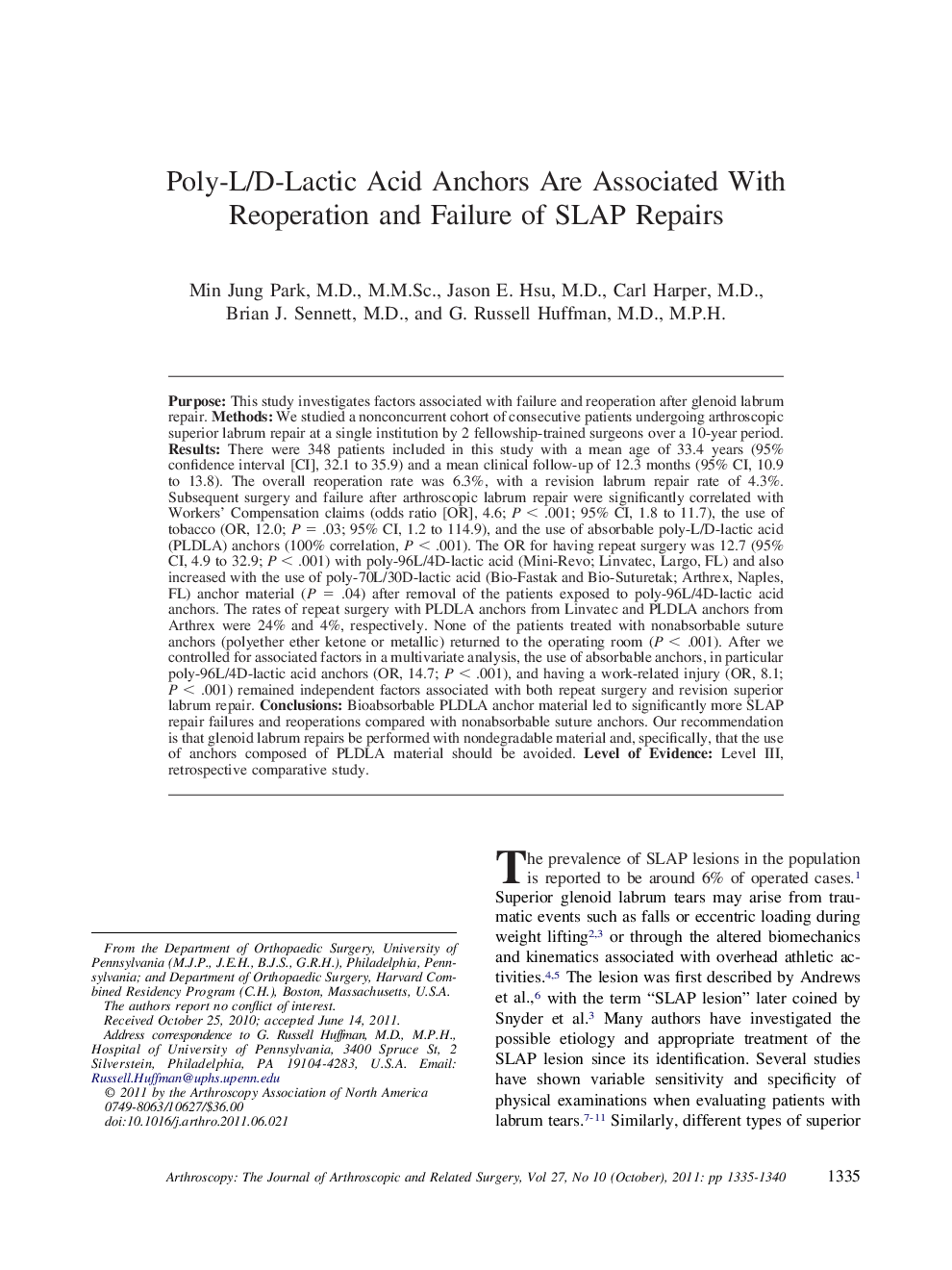| کد مقاله | کد نشریه | سال انتشار | مقاله انگلیسی | نسخه تمام متن |
|---|---|---|---|---|
| 4044421 | 1603536 | 2011 | 6 صفحه PDF | دانلود رایگان |

PurposeThis study investigates factors associated with failure and reoperation after glenoid labrum repair.MethodsWe studied a nonconcurrent cohort of consecutive patients undergoing arthroscopic superior labrum repair at a single institution by 2 fellowship-trained surgeons over a 10-year period.ResultsThere were 348 patients included in this study with a mean age of 33.4 years (95% confidence interval [CI], 32.1 to 35.9) and a mean clinical follow-up of 12.3 months (95% CI, 10.9 to 13.8). The overall reoperation rate was 6.3%, with a revision labrum repair rate of 4.3%. Subsequent surgery and failure after arthroscopic labrum repair were significantly correlated with Workers' Compensation claims (odds ratio [OR], 4.6; P < .001; 95% CI, 1.8 to 11.7), the use of tobacco (OR, 12.0; P = .03; 95% CI, 1.2 to 114.9), and the use of absorbable poly-L/D-lactic acid (PLDLA) anchors (100% correlation, P < .001). The OR for having repeat surgery was 12.7 (95% CI, 4.9 to 32.9; P < .001) with poly-96L/4D-lactic acid (Mini-Revo; Linvatec, Largo, FL) and also increased with the use of poly-70L/30D-lactic acid (Bio-Fastak and Bio-Suturetak; Arthrex, Naples, FL) anchor material (P = .04) after removal of the patients exposed to poly-96L/4D-lactic acid anchors. The rates of repeat surgery with PLDLA anchors from Linvatec and PLDLA anchors from Arthrex were 24% and 4%, respectively. None of the patients treated with nonabsorbable suture anchors (polyether ether ketone or metallic) returned to the operating room (P < .001). After we controlled for associated factors in a multivariate analysis, the use of absorbable anchors, in particular poly-96L/4D-lactic acid anchors (OR, 14.7; P < .001), and having a work-related injury (OR, 8.1; P < .001) remained independent factors associated with both repeat surgery and revision superior labrum repair.ConclusionsBioabsorbable PLDLA anchor material led to significantly more SLAP repair failures and reoperations compared with nonabsorbable suture anchors. Our recommendation is that glenoid labrum repairs be performed with nondegradable material and, specifically, that the use of anchors composed of PLDLA material should be avoided.Level of EvidenceLevel III, retrospective comparative study.
Journal: Arthroscopy: The Journal of Arthroscopic & Related Surgery - Volume 27, Issue 10, October 2011, Pages 1335–1340